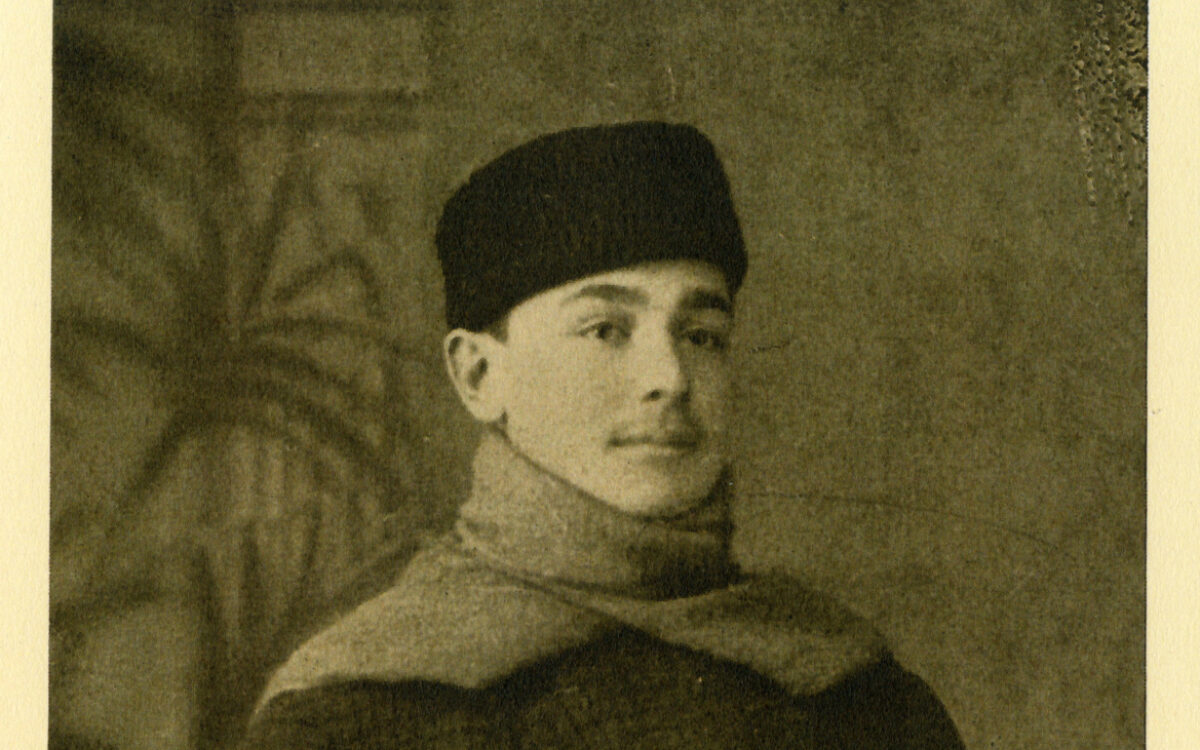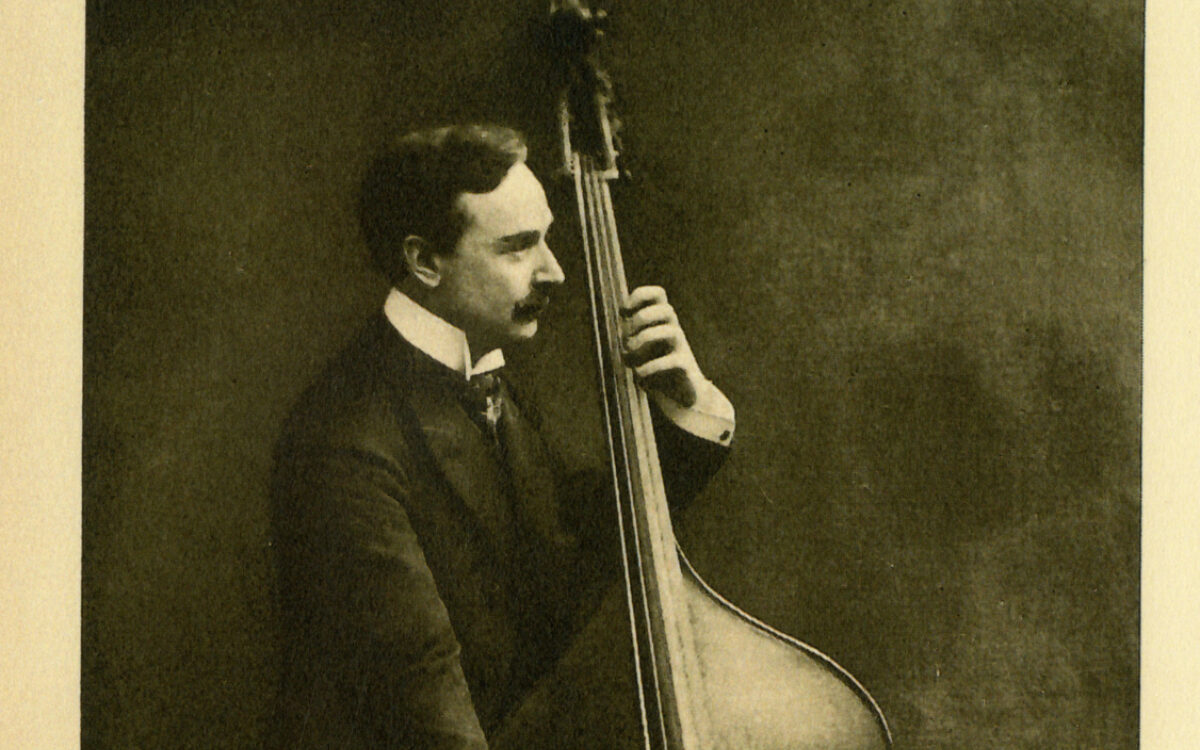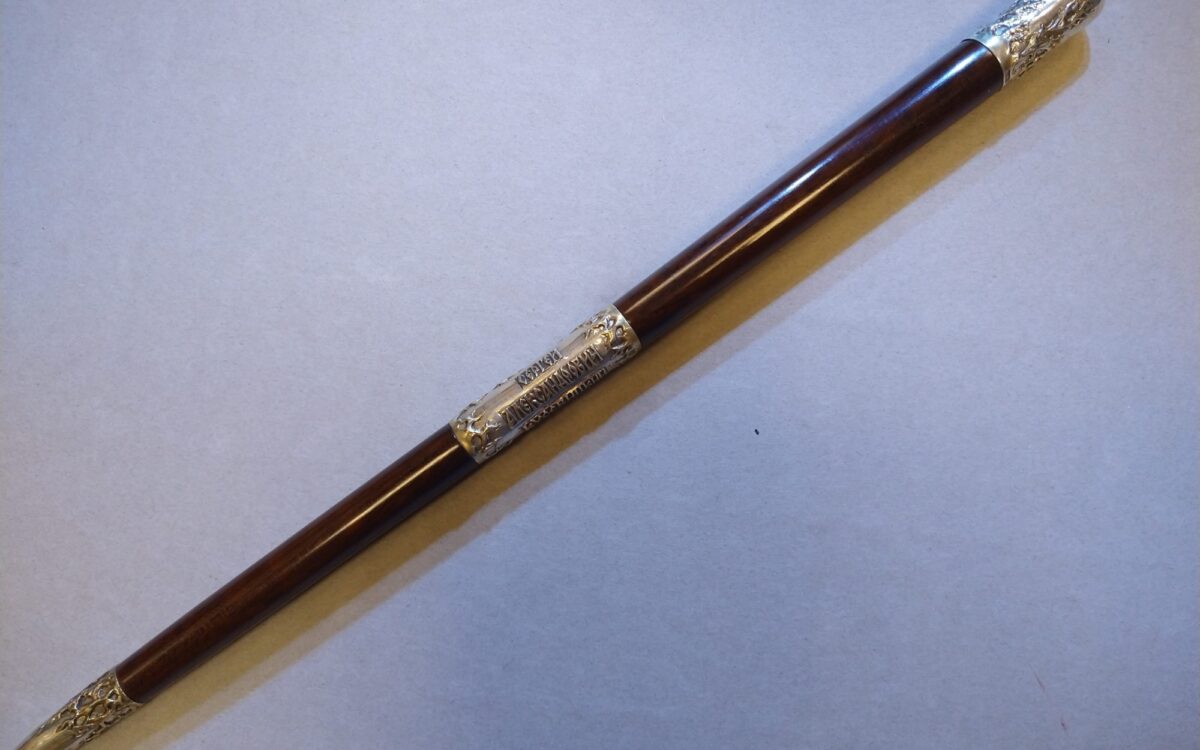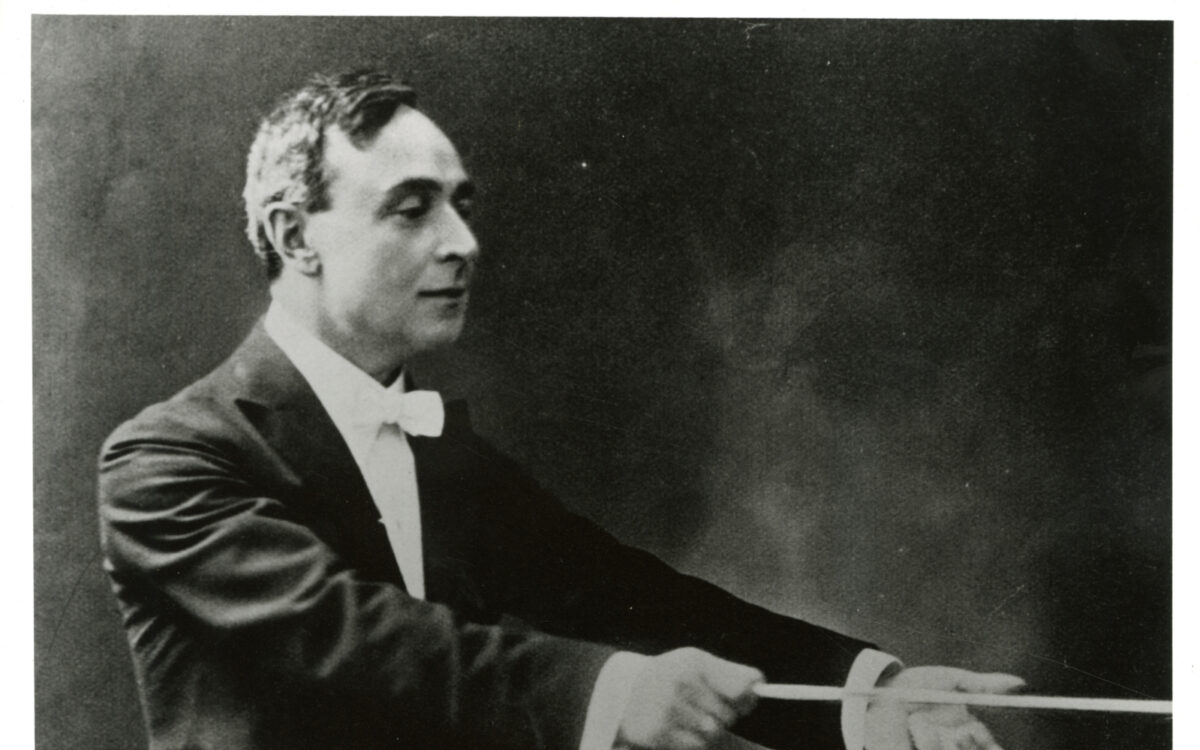Koussevitzky as Musician: Before Boston (1874-1924)
Serge Koussevitzky (1874-1951)
In 1924, Serge Koussevitzky became the BSO's ninth conductor. But his path to the podium started far earlier. Born in Vyshny Volochek, Russia, to a musical but poor family, he attended the Moscow Philharmonic Institute, studying the double bass because the instrument came with a scholarship. While still a student, he became a bass player at the Bolshoi Imperial Theatre. In 1905, he married heiress Natalie Ushkova, and the couple moved to Berlin. Koussevitzky hired a student orchestra to practice conducting, and in 1908, he hired the Berlin Philharmonic and made his conducting debut. In 1909, he founded a publishing company to support composers and promote new music. In 1910, 1912, and 1914, he took an orchestra on tour via the Volga River, stopping at towns that did not have symphony orchestras. After the Russian Revolution in 1917, he accepted a post as conductor of the State Philharmonic Orchestra of Petrograd, but left Russia in 1920 for Europe. In Paris in 1921, he organized a series entitled Concerts Koussevitzky that celebrated new works, which he continued to conduct in between his duties in Boston till the series ended in 1928.
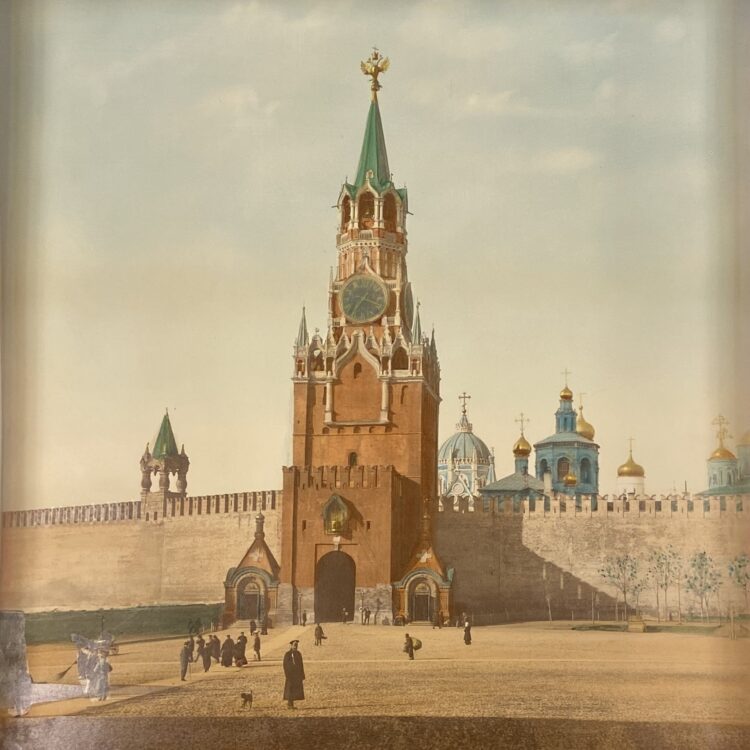
Hand-colored matte albumen print of the Spasskaya Tower in the eastern wall of the Kremlin in Moscow, c. 1890
This print is one of a set of four depicting scenes from the Kremlin around the turn of the 19th century. The four prints hung in Seranak, the home of the Koussevitzkys in the Berkshires near Tanglewood, possibly to remind them of their homeland.
Photographer unknown
From Double Bass to Conducting: Moscow to Berlin
A 15-year-old Serge Koussevitzky as a student
Although the teenage Koussevitzky wanted to be a conductor, the Moscow Philharmonic Institute offered no class in conducting. Lacking funds to support his own education and accepted too late to compete for the normal scholarship opportunities, Koussevitzky took up the double bass, one of three instruments with a bursary attached that was still open by the time he was admitted to the Institute.
Image from Sergei Koussevitzky and His Epoch by Arthur Lourié
Serge Koussevitzky at the double bass in 1906
Though initially choosing to play the bass because of scholarship opportunities, Serge Koussevitzky nevertheless soon excelled at the instrument, turning it into a solo instrument at a time when the bass was considered simply an accompaniment. After being admitted to the Bolshoi Imperial Theatre while still a student, he insisted on the right of title of soloist as part of his employment. This was the first time an orchestral double bass was given that title.
Image from Sergei Koussevitzky and His Epoch by Arthur Lourié
Serge Koussevitzky’s calling card (in Cyrillic)
This visiting card dates from before the Soviet Revolution.
Postcard with image of a young Serge Koussevitzky, ca. 1906
After his marriage to Natalie in 1905, Serge Koussevitkzy hired a student orchestra to learn the art of conducting in his home in Berlin. By 1908, he hired the Berlin Philharmonic and made his conducting debut.
Photographer unknown (postcard by Breitkopf & Hartel)
Bieber cabinet photograph of Arthur Nikisch
At a social luncheon in Berlin, the former BSO conductor Arthur Nikisch told a young Koussevitzky that he would one day lead the Boston orchestra, too.
Photograph by E. Bieber
Listen: Koussevitzky performing his Valse Miniature on double bass, September 25, 1929 (Biddulph WHL019)
Return to Russia
The boat of the third Volga tour by Robert Sterl
At his own expense, Koussevitzky and his ensemble made three tours along the Volga River in 1910, 1912, and 1914, stopping at towns that lacked symphony orchestras. Composer Alexander Scriabin accompanied Koussevitzky on the 1910 tour, performing as piano soloist.
Image from Sergei Koussevitzky and His Epoch by Arthur Lourié
Serge Alexandrovich Koussevitzky presentation conductor’s baton, made by Bolin (Stockholm, Sweden), 1917
Lathe turned maple shaft with cast gold plated sterling silver tip and handle and a cast central band with the conductor’s name (in Cyrillic) which is partly gilded. This arte nouveau piece bears a flame design on each cap and matching motif on the name plate band. It is likely that the baton was presented to Koussevitzky, the legendary double bass virtuoso and later music director of the Boston Symphony Orchestra, upon his appointment to the State Philharmonic Orchestra of Petrograd after the Russian Revolution.
Establishing a Career: Berlin and Paris
Serge Koussevitzky conducting at music stand
Although conducting was his childhood dream, Koussevitzky’s first career was as a double bass soloist in Moscow and Berlin. After his marriage to heiress Natalie Ushkova in 1905, he could afford to hire a student orchestra for practice and in 1908, he hired the Berlin Philharmonic to make his conducting debut. It was in Berlin that Koussevitzky encountered Arthur Nikisch, Oskar Fried and Ferruccio Busoni.
Photographer unknown
Serge Koussevitzky presentation photograph to Noel Devos, the French bassoonist, Paris, September 11, 1922
Koussevitzky lived and worked in Paris, France shortly before the BSO engaged him as conductor in 1924.
Photographer unknown
Read More: Biographies of Koussevitzky
Sergei Koussevitzky and His Epoch: A Biographical Chronicle by Arthur Lourié (trans. S.W. Pring), New York: Alfred Knopf, 1931
In this biography published near the BSO’s 50th anniversary, Russian composer (and friend of subject Koussevitzky) Arthur Lourié offers details of Koussevitzky’s life before he came to Boston: his start as a double bass virtuoso, the early conducting years in both Russia and Paris, and his publishing ventures.
Koussevitzky by Moses Smith, New York: Allen, Towne & Heath, 1947
Biographer Moses Smith presents Koussevitzky’s humble beginnings, his rise to fame in Russia and Europe and his arrival in Boston. He spends chapters on the BSO’s 50th anniversary season, the founding of the TMC, and unionization at the BSO. Appendices include lists of world premieres and compositions by American composers performed during Koussevitzky’s tenure, a list of commissions by the Koussevitzky Music Foundation, and a list of Koussevitzky recordings.
Serge Koussevitzky: The Boston Symphony Orchestra and the New American Music by Hugo Leichtenritt, Cambridge: Harvard University Press, 1947
Leichtenritt’s biography of Koussevitzky focuses on the conductor’s early years with the Boston Symphony Orchestra and his influence on the emerging American sound.
Serge Koussevitzky ("The Russian Years") by Victor Yuzefovich, Moscow: Languages of Slavic Cultures, 2004 (in Russian)
Though currently unavailable in English translation, Dr. Yuzefovich’s book examines multiple primary sources in order to examine Koussevitzky’s early childhood and student days, his double bass playing and early conducting years, and his experiences under the Soviet government, as well as the start of his publishing business and relationships with composers Stravinsky, Prokofiev and Scriabin. This year, for the 150th anniversary of Koussevitzky's birth, a second, significantly expanded edition of this book is being published.

